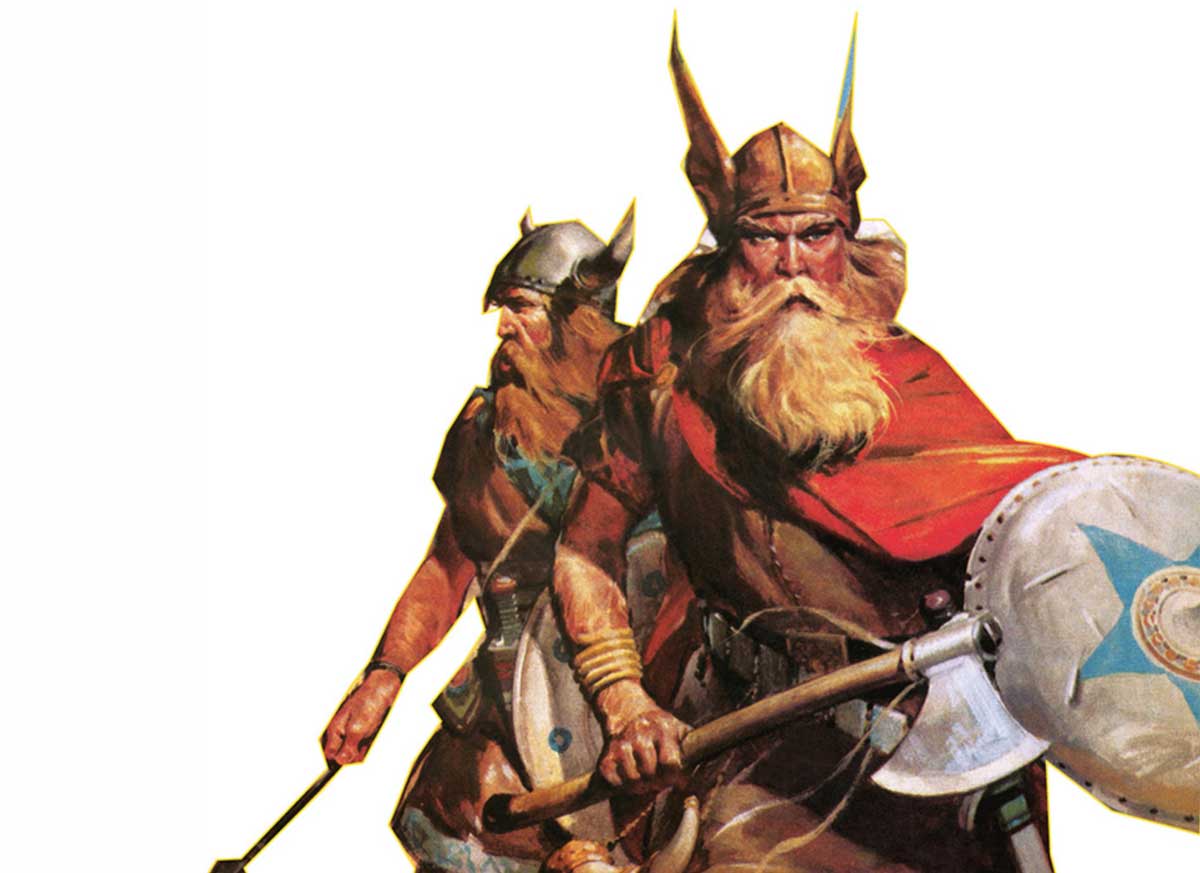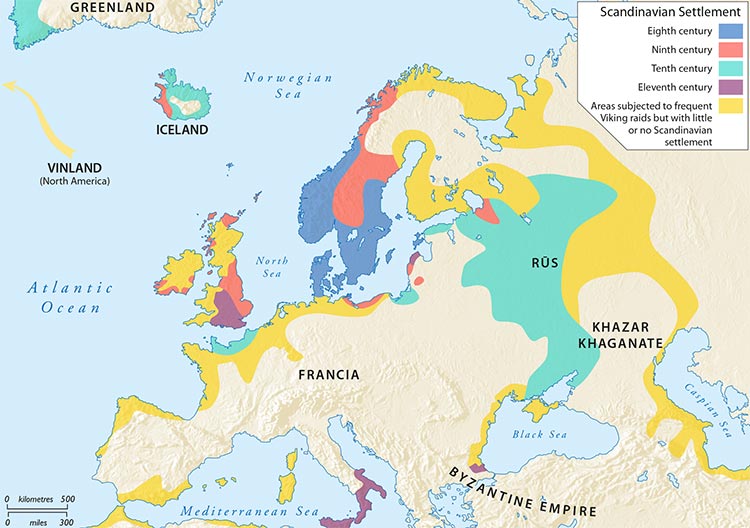Who are the Vikings?
An introduction to the Norsemen.

Common myths of the Vikings’ appearance
The image above illustrates several myths:
- Horned helmets were a myth. The idea Vikings wore them comes from Wagner and other romantic 19th-century images of ancient northern Europe, building on genuine horned helmets of the prehistoric period.
- Vikings rarely had beards. Representations of men often do include beards, though this may partly be about status, and it is unlikely that many were as luxurious as these two.
- Chainmail would have been precious and rare – something for the elite.
- ‘Viking’ is a catch-all term for the people who came from Scandinavia, what is now Norway, Denmark and Sweden, between the eighth and 11th centuries, more properly known as the Norse, or Norsemen.
- Greek shields were more usually seen on the Hoplites, although Vikings did also use them.
- Vikings did sometimes use axes, though spears and swords were more common.
- We know that Vikings had drinking horns, but there is little evidence for battle horns.
A notorious reputation
They have long had a notorious reputation as the raiders and pirates of the medieval world and certainly it is not unjustified: their raids were fearsome and long-running. However, they were also explorers and skilled seafarers, managing to spread across Europe and east into Asia, south to northern Africa and as far west as Newfoundland. They established trade routes across the known world and settled in northern Britain, Ireland and among the Franks, forming the Kievan Rūs kingdom on the River Volga.
The Norse were initially pagan and targeted the wealthy Christian monasteries in their raids, but they later converted. A few of the stunning stave churches they built in Scandinavia can still be seen today.

The origins of the name ‘Viking’ are uncertain. It may derive from the Old Norse word vík, ‘creek, inlet, bay’, meaning the Vikings were those who came from, or inhabited, the edges of the land and sea. Equally, it might be an Anglo-Frisian name, from the Old English wīc, ‘camp’, referring to the temporary settlements they built during their raids.
They spoke Old Norse, a language which had a striking influence on English thanks to their settlement in the north of England (it has given us ‘slaughter’, ‘to birth’, ‘cake’ and ‘happy’, among countless other words). Early records of their writing can be found in runic inscriptions, which are often quite mundane, carved into objects and as graffiti (‘Eyjolfr Kolbeinsson carved these runes high up’ is carved above a door in Orkney). But the main source for their culture, beyond what is written by the peoples they encountered, is the sagas, which were written in 13th-century Iceland. These are the stories of their history – a romanticised mix of truth and legend.
For more on the Vikings read Barbaric Beauty in the June issue of History Today.
Our thanks to Rory Naismith of King's College London Sheryl McDonald Werronen of the University of Copenhagen for their assistance with this piece